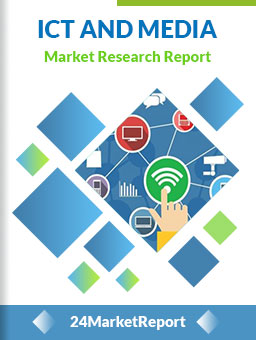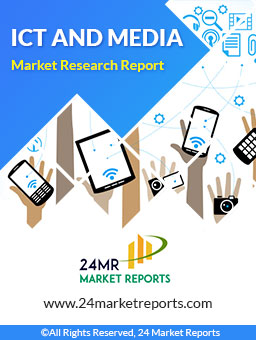
Download FREE Report Sample
Download Free sampleSepsis is usually treated with intravenous fluids and antibiotics. Typically, antibiotics are given as soon as possible. Often, ongoing care is performed in an intensive care unit. If fluid replacement is not enough to maintain blood pressure, medications that raise blood pressure may be used. Mechanical ventilation and dialysis may be needed to support the function of the lungs and kidneys, respectively. To guide treatment, a central venous catheter and an arterial catheter may be placed for access to the bloodstream. Other measurements such as cardiac output and superior vena cava oxygen saturation may be used. People with sepsis need preventive measures for deep vein thrombosis, stress ulcers and pressure ulcers, unless other conditions prevent such interventions. Some might benefit from tight control of blood sugar levels with insulin. The use of corticosteroids is controversial, with some reviews finding benefit, and others not.
Sepsis Therapeutics Market aims to provide a comprehensive presentation of the global market for Sepsis Therapeutics, with both quantitative and qualitative analysis, to help readers develop business/growth strategies, assess the market competitive situation, analyze their position in the current marketplace, and make informed business decisions regarding Sepsis Therapeutics. Sepsis Therapeutics Market contains market size and forecasts of Sepsis Therapeutics in global, including the following market information:
Global Sepsis Therapeutics Market Revenue, 2018-2023, 2024-2029, ($ millions)
Global top five companies in 2022 (%)
The global Sepsis Therapeutics market was valued at US$ 3450 million in 2022 and is projected to reach US$ 5330.2 million by 2029, at a CAGR of 6.4% during the forecast period. The influence of COVID-19 and the Russia-Ukraine War were considered while estimating market sizes.
Market competition is intense. Pfizer, NCPC, Bayer, Shanghai Pharmaceuticals, Johnson & Johnson, Novartis, GlaxoSmithKline etc. are the leaders of the industry, and they hold key technologies and patents, with high-end customers; with the development of society and the changing of consumer demand, there will be more companies enter this industry. Pfizer accounted for largest market share of about 3% in 2019.
We surveyed the Sepsis Therapeutics companies, and industry experts on this industry, involving the revenue, demand, product type, recent developments and plans, industry trends, drivers, challenges, obstacles, and potential risks.
Total Market by Segment:
Global Sepsis Therapeutics Market, by Type, 2018-2023, 2024-2029 ($ millions)
Global Sepsis Therapeutics Market Segment Percentages, by Type, 2022 (%)
Aminoglycosides
Colony Stimulating Factors
Second Generation Cephalosporins
Third Generation Cephalosporins
Glycopeptide Antibiotics
Inhaled Intifectives
Others
Global Sepsis Therapeutics Market, by Application, 2018-2023, 2024-2029 ($ millions)
Global Sepsis Therapeutics Market Segment Percentages, by Application, 2022 (%)
Hospitals
Clinics
Other
Global Sepsis Therapeutics Market, By Region and Country, 2018-2023, 2024-2029 ($ Millions)
Global Sepsis Therapeutics Market Segment Percentages, By Region and Country, 2022 (%)
North America
US
Canada
Mexico
Europe
Germany
France
U.K.
Italy
Russia
Nordic Countries
Benelux
Rest of Europe
Asia
China
Japan
South Korea
Southeast Asia
India
Rest of Asia
South America
Brazil
Argentina
Rest of South America
Middle East & Africa
Turkey
Israel
Saudi Arabia
UAE
Rest of Middle East & Africa
Competitor Analysis
The report also provides analysis of leading market participants including:
Key companies Sepsis Therapeutics revenues in global market, 2018-2023 (estimated), ($ millions)
Key companies Sepsis Therapeutics revenues share in global market, 2022 (%)
Further, the report presents profiles of competitors in the market, key players include:
Agennix
AstraZeneca
Atox Bio
CytoGenix
Eli Lilly
Endacea
NexBio
Medinox
Outline of Major Chapters:
Chapter 1: Introduces the definition of Sepsis Therapeutics, market overview.
Chapter 2: Global Sepsis Therapeutics market size in revenue.
Chapter 3: Detailed analysis of Sepsis Therapeutics company competitive landscape, revenue and market share, latest development plan, merger, and acquisition information, etc.
Chapter 4: Provides the analysis of various market segments by type, covering the market size and development potential of each market segment, to help readers find the blue ocean market in different market segments.
Chapter 5: Provides the analysis of various market segments by application, covering the market size and development potential of each market segment, to help readers find the blue ocean market in different downstream markets.
Chapter 6: Sales of Sepsis Therapeutics in regional level and country level. It provides a quantitative analysis of the market size and development potential of each region and its main countries and introduces the market development, future development prospects, market space of each country in the world.
Chapter 7: Provides profiles of key players, introducing the basic situation of the main companies in the market in detail, including product sales, revenue, price, gross margin, product introduction, recent development, etc.
Chapter 8: The main points and conclusions of the report.

Speak to our Custom Research Team and get the Custom Research in a budget
Custom ResearchFrequently Asked Questions ?
A license granted to one user. Rules or conditions might be applied for e.g. the use of electric files (PDFs) or printings, depending on product.
A license granted to multiple users.
A license granted to a single business site/establishment.
A license granted to all employees within organisation access to the product.
Upto Working 24 to 48 hrs
Upto 72 hrs max - Weekends and Public Holidays
Online Payments with PayPal and CCavenue
Wire Transfer/Bank Transfer
Hard Copy




 Industry Market Size
Industry Market Size SWOT Analysis
SWOT Analysis Industry Major Players
Industry Major Players Revenue Forecasts
Revenue Forecasts Historical and Forecast Growth
Historical and Forecast Growth Profitability Analysis
Profitability Analysis
























